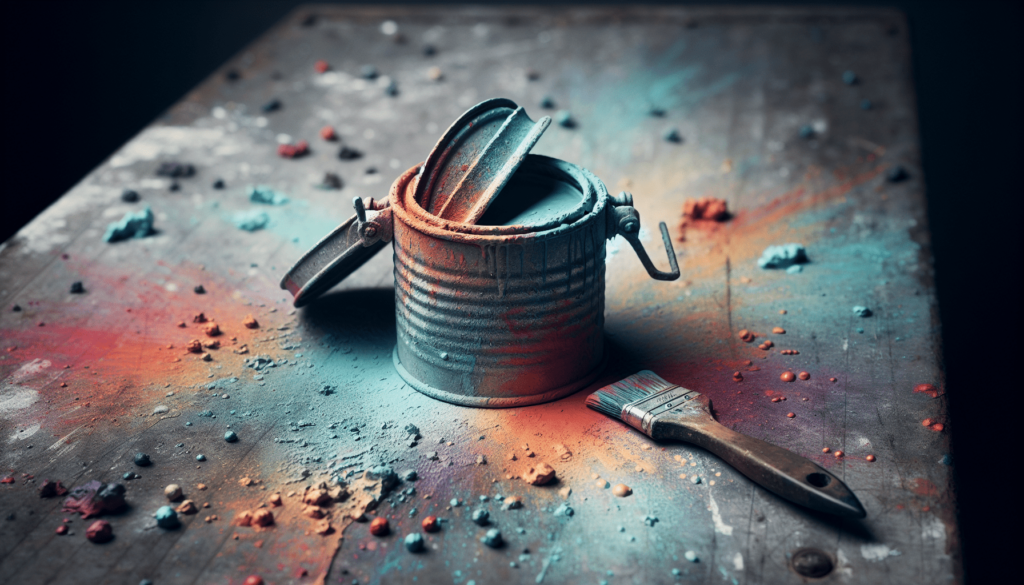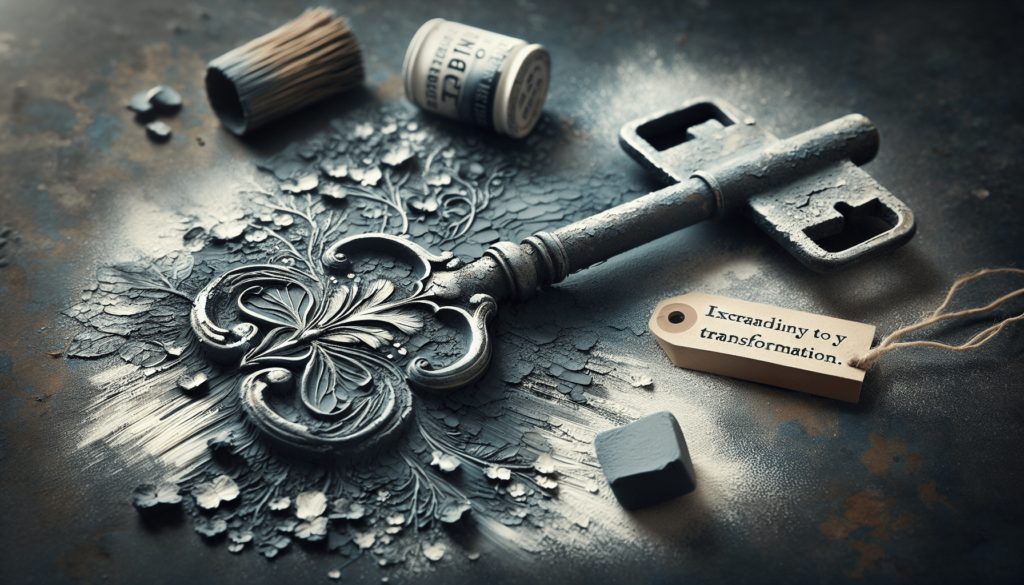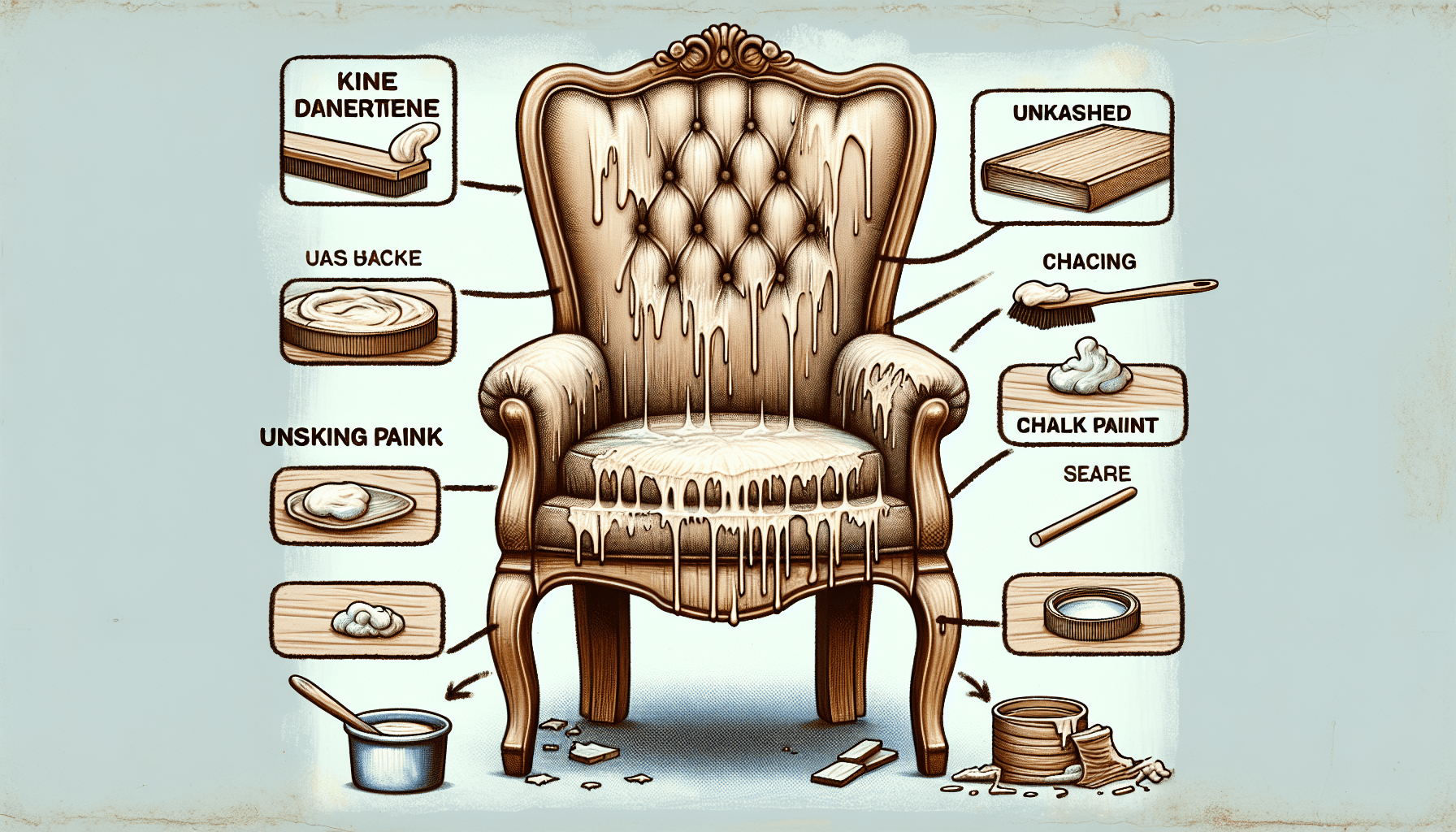Chalk paint has become a popular choice for transforming furniture and giving it a stylish, vintage look. But have you ever wondered if this versatile paint can be used on metal surfaces as well? In this article, we will explore the compatibility of chalk paint with metal and shed light on the possibilities and limitations of using this paint on metal objects. Whether you’re looking to revamp an old metal chair or give a unique touch to a metal decor piece, read on to discover the answers to your questions about using chalk paint on metal.

Understanding Chalk Paint
What is Chalk Paint?
Chalk paint is a type of decorative paint that has gained popularity in recent years due to its unique properties and versatility. Unlike traditional paints, chalk paint has a matte, chalky finish that gives a vintage or distressed look to surfaces. It is known for its excellent coverage and ability to adhere to various materials, including wood, glass, fabric, and even metal.
Properties of Chalk Paint
Chalk paint is made with a different composition compared to regular paint. It typically contains ingredients such as chalk, limestone, water, color pigments, and a binder, such as acrylic. These components give chalk paint its distinct characteristics, including a matte finish, excellent adhesion, and the ability to easily distress or create a vintage look.
Chalk Paint Compatibility with Metal
Application on Metal Surfaces
Chalk paint can indeed be used on metal surfaces, offering a unique and stylish alternative to traditional metal paints. It can transform plain and outdated metal furniture or fixtures into beautiful pieces that fit your desired aesthetic. However, it is crucial to understand the proper techniques and considerations when using chalk paint on metal to achieve the best results.
Adhesion and Durability on Metal
One of the key factors to consider when using chalk paint on metal is its adhesion and durability. While chalk paint adheres well to most surfaces, metal can be a challenging material due to its slick and non-porous nature. To ensure proper adhesion, it is crucial to prepare the metal surface adequately before applying the chalk paint.
Surface Preparation for Metal
Before painting, it is essential to clean the metal surface thoroughly to remove any dirt, grease, or rust. Start by using a mild detergent or degreaser to clean the surface, followed by a rinse and dry. If there are areas with rust, use sandpaper or steel wool to gently remove the rust, and wipe away any residue. Properly preparing the metal surface will help the chalk paint adhere better and enhance its durability.
Potential Issues with Chalk Paint on Metal
While chalk paint can be used on metal, it is essential to be aware of potential issues that may arise. One common issue is the tendency for chalk paint to chip or scratch on metal surfaces, especially in high-traffic areas or when using the painted metal for functional purposes. Moreover, prolonged exposure to moisture or extreme weather conditions may cause the chalk paint to deteriorate more quickly on metal than on other materials.
Steps to Paint Metal with Chalk Paint
Gather Supplies
Before starting the painting process, gather all the necessary supplies. This includes chalk paint in your desired color, a paintbrush or roller, sandpaper or steel wool (if needed for surface preparation), a clean cloth or sponge, and optionally, a sealant for added protection.
Clean the Metal Surface
As mentioned earlier, proper surface preparation is crucial for successful adhesion of chalk paint on metal. Begin by cleaning the metal surface thoroughly, removing any dirt, grease, or rust. Use a mild detergent or degreaser, and scrub gently with a cloth or sponge. Rinse the surface with clean water and allow it to dry completely.
Apply the Chalk Paint
Once the metal surface is clean and dry, it is time to apply the chalk paint. Stir the paint well to ensure an even consistency. Apply the chalk paint using a brush or roller, working in thin, even strokes. Start from one end and move towards the other, covering the entire surface. Allow the first coat to dry completely before applying additional coats if necessary.
Allow the Paint to Cure
After applying the desired number of coats, allow the chalk paint to cure fully. The curing time can vary depending on the brand of chalk paint and environmental conditions. Follow the manufacturer’s recommendations for the best results. Avoid using or placing any objects on the painted metal until the paint has fully cured to prevent any potential damage.
Optional: Sealing and Protecting the Painted Metal
While not necessary, applying a sealant to the painted metal can provide added protection and enhance the durability of the chalk paint. There are various sealants available, such as wax or polyurethane. Follow the manufacturer’s instructions for proper application and drying times. Keep in mind that sealing the painted metal may slightly alter the appearance or sheen of the chalk paint.
Tips and Tricks
Choose the Right Chalk Paint
When selecting chalk paint for painting metal, consider choosing a brand that specifically mentions its compatibility with metal surfaces. These types of chalk paints often have additional properties that enhance adhesion and durability on metal.
Use Primer if Needed
If your metal surface has significant imperfections, rust, or previous paint layers, using a primer specifically designed for metal can improve the adhesion of the chalk paint and provide a smoother finish. Apply the primer according to the manufacturer’s instructions, and allow it to dry completely before applying the chalk paint.
Consider Sanding
In some cases, sanding the metal surface lightly before painting can increase the adhesion of the chalk paint. Use a fine-grit sandpaper or steel wool and gently roughen the surface. This can help create a better surface for the paint to adhere to.
Apply Thin Coats
To achieve optimal adhesion and avoid potential chipping or cracking, it is recommended to apply several thin coats of chalk paint rather than one thick coat. Thin coats allow for better penetration and drying, resulting in a more durable finish.
Properly Cure and Seal the Painted Metal
To ensure longevity and protection for the painted metal, it is crucial to allow the chalk paint to cure fully before exposing it to moisture or placing objects on it. Additionally, consider using a suitable sealant to provide an extra layer of protection against wear and tear.

Advantages of Using Chalk Paint on Metal
Versatility and Variety of Finishes
Chalk paint offers a wide range of finishes, allowing you to achieve various looks on metal surfaces. Whether you prefer a smooth, matte finish or a distressed, vintage appearance, chalk paint provides versatility in creating the desired aesthetic for your metal pieces.
Ease of Application
One of the major advantages of using chalk paint is its ease of application. Unlike traditional paints that require extensive surface preparation and priming, chalk paint can be applied directly to the metal surfaces without much hassle. Its excellent coverage and ability to adhere to various materials make it a convenient option for painting metal.
Eco-Friendly and Low VOC
Many chalk paints are environmentally friendly and contain low to no volatile organic compounds (VOCs), making them a more sustainable choice compared to traditional paints. This is especially important when painting metal objects for indoor use, as it reduces the exposure to harmful chemicals.
Ability to Distress and Vintage Look
Chalk paint is well-known for its ability to distress easily, creating a worn or vintage appearance on metal surfaces. This distressed look can add character and charm to your metal furniture or decorative items, giving them a unique and personalized touch.
Disadvantages of Using Chalk Paint on Metal
Limited Color Options
While chalk paint offers a variety of finishes, the color options available may be limited compared to traditional metal paints. This can be a drawback if you desire a particular color that is not readily available in chalk paint form. However, some brands do offer a wider range of colors to choose from.
Durability Concerns
Although chalk paint can adhere well to metal surfaces, its durability can be a concern, especially in high-traffic areas or when used on functional objects. The matte finish of chalk paint may wear off more quickly on metal due to constant friction, rubbing, or exposure to moisture.
Potential for Chipping or Scratching
Another disadvantage of using chalk paint on metal is its susceptibility to chipping or scratching, particularly in areas of heavy use or contact. The matte finish and the textured surface of chalk paint may be more prone to damage compared to glossy or smooth finishes.
Alternative Paint Options for Metal
Specific Metal Paints
When painting metal, using a paint specifically formulated for metal surfaces can provide better adhesion and durability. These paints are designed to withstand harsh conditions, resist rust or corrosion, and offer a wide range of color options.
Spray Paints
Spray paints can also be a convenient option for painting metal surfaces, as they provide even coverage and are easy to apply. There are spray paints available specifically designed for metal, offering excellent adhesion and durability.
Epoxy or Acrylic Paints
Epoxy or acrylic paints are known for their durability and resistance to wear and tear. These types of paints can be used on metal surfaces, providing a smooth and glossy finish. However, they may require additional surface preparation and proper ventilation during application.
Frequently Asked Questions
Can chalk paint withstand outdoor use on metal?
While chalk paint can be used for outdoor metal projects, it is essential to note that its durability may be compromised due to exposure to the elements. To increase the longevity of chalk paint on outdoor metal surfaces, consider using a suitable sealant or topcoat specifically designed for outdoor use.
Can I use chalk paint on rusty metal?
Yes, chalk paint can be used on rusty metal surfaces. However, it is crucial to remove as much rust as possible before applying the paint. Lightly sanding the rusty areas and using a rust converter or primer designed for metal can help prevent further rusting and improve the adhesion of the chalk paint.
What brushes or tools should I use with chalk paint on metal?
When using chalk paint on metal, consider using high-quality brushes with natural bristles or foam brushes. These brushes are designed for smooth application and can help achieve an even finish. Foam rollers can also be used for larger metal surfaces.
Do I need to seal chalk paint on metal?
While not necessary, using a sealant on chalk-painted metal surfaces can provide added protection against wear, moisture, and UV damage. There are various sealants available, such as wax or polyurethane. Follow the manufacturer’s instructions for proper application and drying times.
Conclusion
Chalk paint offers a unique and stylish option for painting metal surfaces, allowing you to transform outdated or plain metal pieces into beautiful and personalized objects. By properly preparing the metal surface and following the recommended techniques and tips, you can achieve excellent adhesion, durability, and the desired look with chalk paint. While there are some limitations and considerations when using chalk paint on metal, its versatility, ease of application, and ability to distress make it a popular choice for those looking to add character and charm to their metal pieces.



